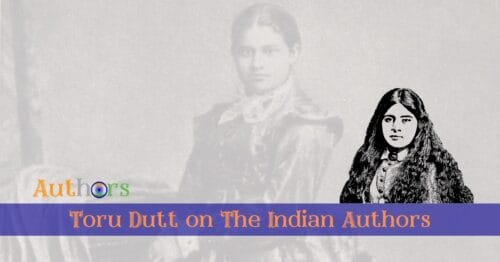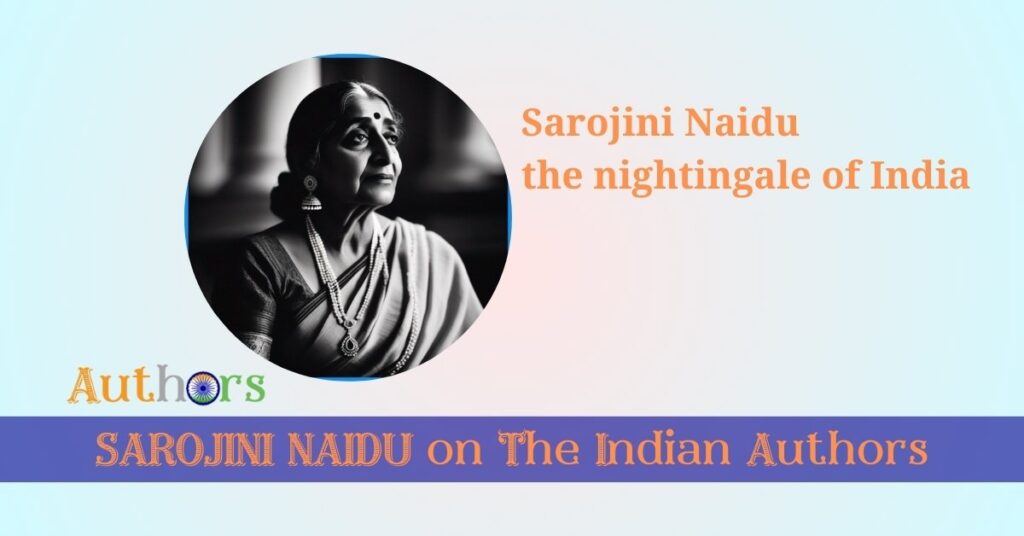Toru Dutt: A Fragile Blossom of Indian English Poetry
Name: Toru Dutt
Born: March 4, 1856, Calcutta, India
Died: August 30, 1877, Calcutta, India
Occupation: Poet, Novelist, Translator
Genre: Poetry, Fiction, Translation
Famous Works: A Sheaf Gleaned in French Fields (1876), Ancient Ballads and Legends of Hindustan (1882), Le Journal de Mademoiselle d’Arvers (1879)
Notable Achievements: First Indian woman to write novels in French and English; pioneer of Indian English poetry.
Toru Dutt stands as a luminous figure in the annals of Indian English literature, a prodigious talent whose life was tragically brief but whose literary legacy continues to resonate. Born into an aristocratic Bengali family in Calcutta, Toru Dutt was a trailblazer who transcended the boundaries of language, culture, and tradition. Her works, marked by a profound sense of authenticity and a deep connection to her Indian roots, represent a significant departure from the imitative tendencies of her predecessors. Toru Dutt’s poetry and prose are not merely literary achievements but a testament to her ability to weave together the threads of Indian mythology, European Romanticism, and Victorian sensibilities into a unique tapestry of words. As we delve into the life and works of Toru Dutt, we uncover the story of a young woman whose literary genius was cut short by fate but whose contributions continue to inspire generations.
Biographical Details
Toru Dutt was born on March 4, 1856, into the illustrious Dutt family of Rambagan, Calcutta. Her father, Govin Chunder Dutt, was a prominent figure in Bengali society, and her mother, Kshetramoni Dutt, was a woman of literary inclinations. Toru was the youngest of three siblings, and her early years were spent in an environment steeped in intellectual and cultural pursuits. The Dutt family’s conversion to Christianity in 1862 marked a significant turning point in Toru’s life, exposing her to Western education and literature at an early age.
Toru’s education was unconventional for her time. She was homeschooled in English, French, and music, and by the age of fourteen, she had read Shakespeare and Milton. In 1869, the Dutt family embarked on a four-year sojourn in Europe, where Toru and her sister Aru attended school in Nice and later lectures at Cambridge. This European culture and literature exposure profoundly influenced Toru’s worldview and literary sensibilities. However, the family’s return to India in 1873 was marred by personal tragedies: the deaths of Toru’s brother Abju and her sister Aru, both of whom succumbed to tuberculosis. Toru herself was diagnosed with the same disease, and a relentless pursuit of literary excellence marked her final years despite her declining health.
Toru Dutt’s life was a blend of promise and tragedy. She died on August 30, 1877, at twenty-one, leaving behind a body of work that would secure her place in the pantheon of Indian English literature. Her father, Govin Chunder Dutt, posthumously published her works, ensuring that her untimely death would not silence her voice.
Writings of Toru Dutt
Toru Dutt’s literary career, though brief, was remarkably prolific. Her works span poetry, fiction, and translation, reflecting her mastery of multiple languages and literary forms. Her first published work, A Sheaf Gleaned in French Fields (1876), was a collection of translations from French poets, including Victor Hugo, Charles Baudelaire, and Leconte de Lisle. The volume contained 165 poems and was a remarkable achievement for a twenty-year-old woman. Edmund Gosse, the English critic, hailed it as “a wonderful mixture of strength and weakness,” praising Toru’s ability to capture the spirit of the original French verses while infusing them with her lyrical sensibility.
Toru’s fascination with French literature extended beyond translation. In 1879, her French novel, Le Journal de Mademoiselle d’Arvers, was published posthumously. Written in the form of a diary, the novel tells the story of a young French girl, Marguerite, and explores themes of love, loss, and redemption. The novel was well-received in France, with critics marvelling at Toru’s command of the French language and her ability to evoke the nuances of French society.
However, it is Toru’s English poetry that remains her most enduring legacy. Ancient Ballads and Legends of Hindustan (1882), published posthumously, is a collection of nine narrative poems based on Indian myths and legends. The volume includes retellings of stories from the Mahabharata and the Puranas, such as “Savitri,” “Sita,” and “Lakshman.” Toru’s treatment of these ancient tales is marked by a deep reverence for their cultural and spiritual significance and a keen awareness of their universal themes. The collection also includes several lyrical poems, such as “Our Casuarina Tree” and “Baugmaree,” celebrated for their evocative imagery and emotional depth.
List of her Works:
- A Sheaf Gleaned in French Fields (1876)
- A collection of translations from French poets, including Victor Hugo, Charles Baudelaire, and Leconte de Lisle.
- Bianca, or The Young Spanish Maiden (1878)
- An unfinished romance published serially in the Bengal Magazine after her death.
- Le Journal de Mademoiselle d’Arvers (1879)
- A novel written in French, published posthumously. It tells the story of a young French girl, Marguerite, and explores themes of love, loss, and redemption.
- Ancient Ballads and Legends of Hindustan (1882)
- A posthumously published collection of nine narrative poems based on Indian myths and legends, including “Savitri,” “Sita,” and “Lakshman.” The collection also includes lyrical poems such as “Our Casuarina Tree” and “Baugmaree.”
- Essays and Translations
- Toru Dutt wrote critical essays on Leconte de Lisle and Henry Derozio, which were published in the Bengal Magazine in December 1874.
- She also translated speeches by Victor Hugo and Adolphe Thiers, published in the Bengal Magazine in 1875 under the title A Scene from Contemporary History.
- Letters and Diaries
- Toru Dutt’s correspondence with her English friend Mary Martin and French writer Clarisse Bader was published in Life and Letters of Toru Dutt (1921) by Harihar Das.
- Although her travel diaries from Europe were never published, they are mentioned as significant personal records.
These works collectively highlight Toru Dutt’s versatility as a writer, her mastery of multiple languages, and her ability to bridge Indian and Western literary traditions.
Toru Dutt as a Poet: A Critical Assessment
Toru Dutt’s poetry is characterized by its lyrical beauty, vivid imagery, and profound emotional resonance. Her ability to blend Indian mythological themes with Western poetic forms sets her apart from her contemporaries. In Ancient Ballads and Legends of Hindustan, Toru demonstrates a remarkable command of the ballad form, using it to breathe new life into ancient tales. Her poems are not mere retellings; they are imaginative reinterpretations that capture the essence of the original stories while infusing them with her unique voice.
One of the most striking features of Toru’s poetry is her use of local colour and imagery. In “Baugmaree,” she vividly describes her family’s garden in Calcutta, describing the “sea of foliage” and the “red, red, and startling” flowers of the simul tree. Her ability to evoke the sights, sounds, and smells of the Indian landscape is unparalleled, and her descriptions are imbued with a sense of nostalgia and longing.
Toru’s poetic technique is also noteworthy. She employs a variety of metrical forms, including the ballad measure, blank verse, and the sonnet, demonstrating her versatility as a poet. Though influenced by Victorian Romanticism, her diction is distinctly her own, and her use of archaisms and mythological allusions adds depth and richness to her verse.
However, Toru’s poetry is not without its limitations. Some critics have noted that her work occasionally veers towards idealism, with her portrayals of Indian mythology lacking the gritty realism of her European counterparts. Additionally, her Christian upbringing sometimes leads to dissonance in her treatment of Hindu themes, as seen in “The Royal Ascetic and the Hind,” where she imposes a Christian moral on a Hindu legend.
Despite these limitations, Toru Dutt’s poetry remains a significant achievement in Indian English literature. Her ability to bridge the gap between Indian and Western literary traditions, her mastery of form and language, and her deep emotional resonance make her a poet of enduring relevance.
Themes and Philosophy
A deep engagement with themes of identity, culture, and the human condition marks Toru Dutt’s works. Her poetry and prose reflect her struggle to reconcile her Indian heritage with her Western education, a theme that resonates with many postcolonial writers. In Ancient Ballads and Legends of Hindustan, Toru explores the rich tapestry of Indian mythology, using it as a lens to examine universal themes such as love, sacrifice, and devotion.
Another recurring theme in Toru’s work is the passage of time and the inevitability of death. This theme is particularly evident in poems like “Our Casuarina Tree,” where she reflects on the transience of life and the enduring power of memory. Toru’s awareness of her mortality due to her illness lends a poignant urgency to her work.
Toru’s philosophy is rooted in a deep sense of spirituality and a belief in the transformative power of art. Her works are imbued with reverence for the natural world and recognition of the interconnectedness of all living things. This philosophy is reflected in her use of natural imagery and celebration of the beauty and diversity of the Indian landscape.
Legacy and Impact
Toru Dutt’s legacy is one of pioneering achievement and enduring influence. She was one of the first Indian writers to gain recognition in the West, and her works continue to be studied and celebrated for their literary merit and cultural significance. Her ability to bridge the gap between Indian and Western scholarly traditions has made her a role model for subsequent generations of Indian writers.
Toru’s impact on Indian English literature is profound. She paved the way for future writers such as Sarojini Naidu and Rabindranath Tagore, who would achieve international acclaim. Her works have inspired countless scholars and critics, and her poetry remains a source of inspiration for readers worldwide.
Conclusion
Toru Dutt’s life and works are a testament to the power of literature to transcend boundaries and illuminate the shared complexities of the human experience. Her poetry and prose, marked by their lyrical beauty, emotional depth, and cultural richness, resonate with readers today. Though her life was tragically brief, Toru Dutt’s literary legacy endures a fragile blossom of song that continues to bloom in the garden of Indian English literature. Reflecting on her contributions, we are reminded of her words’ enduring power to inspire, heal, and transform. Toru Dutt’s voice, though silenced too soon, remains a beacon of hope and a source of inspiration for generations to come.
Written by Alok Mishra for The Indian Authors




